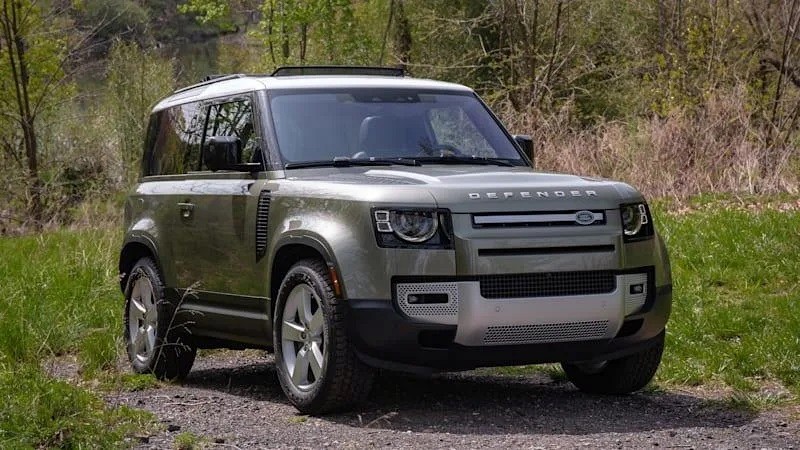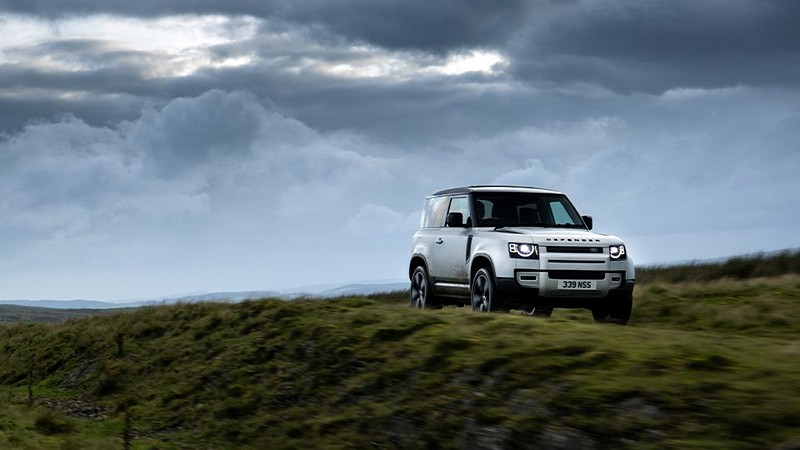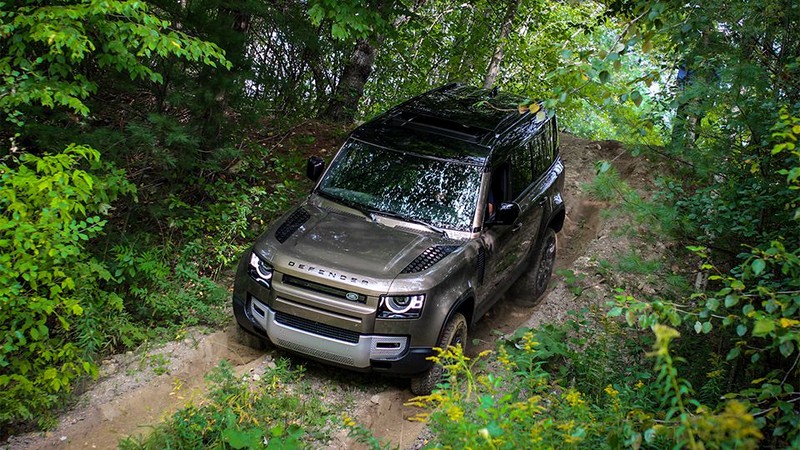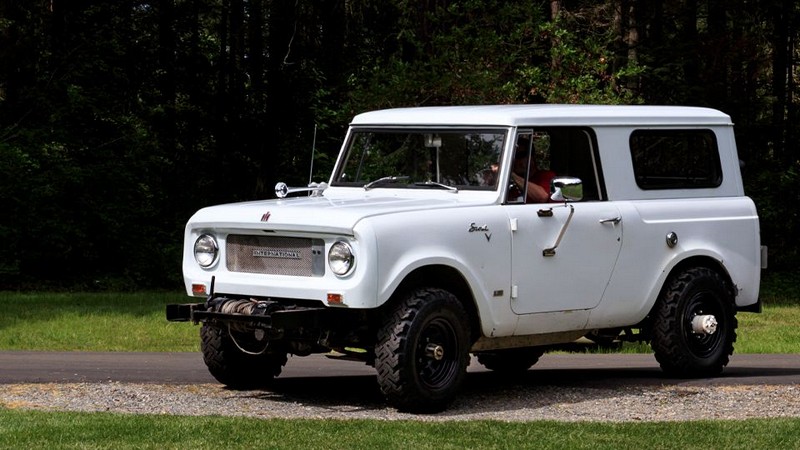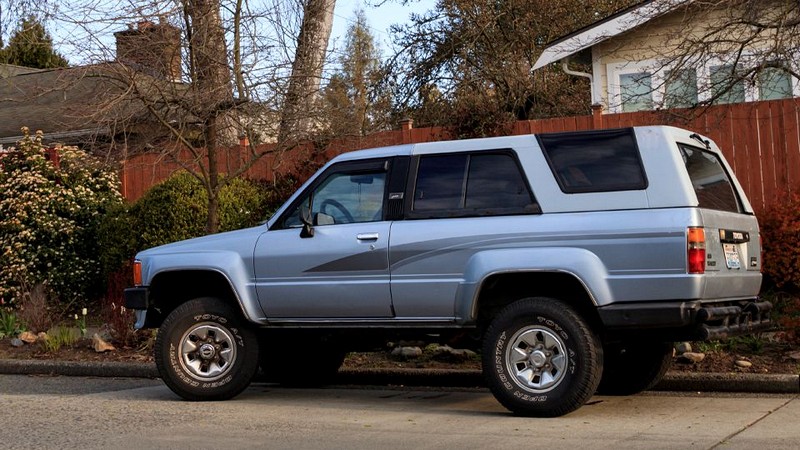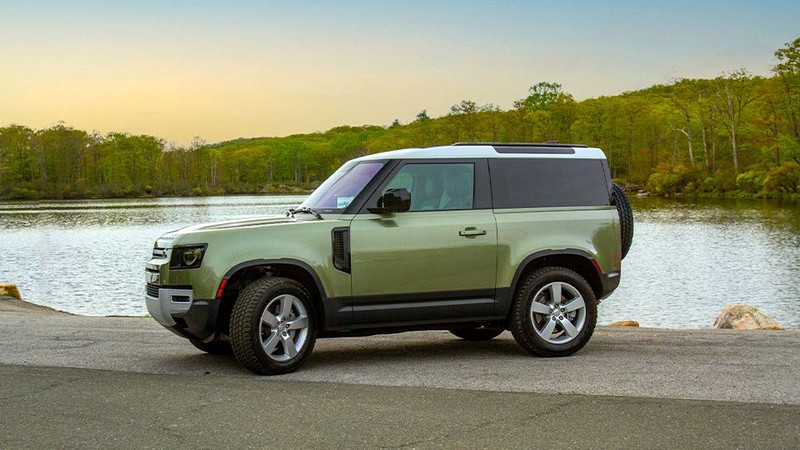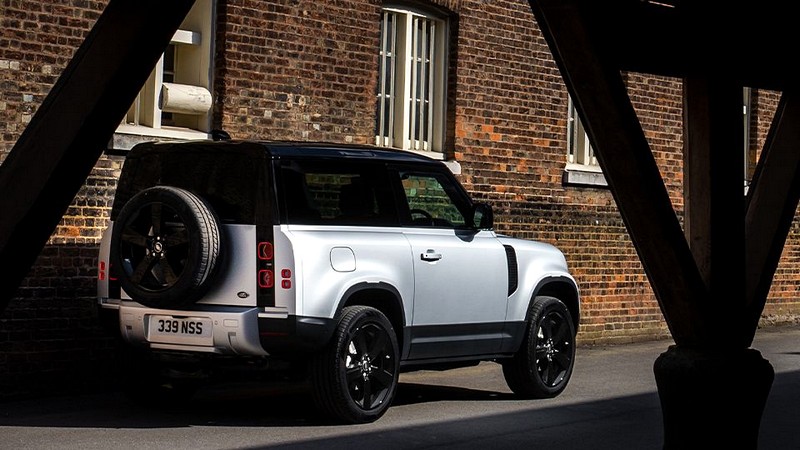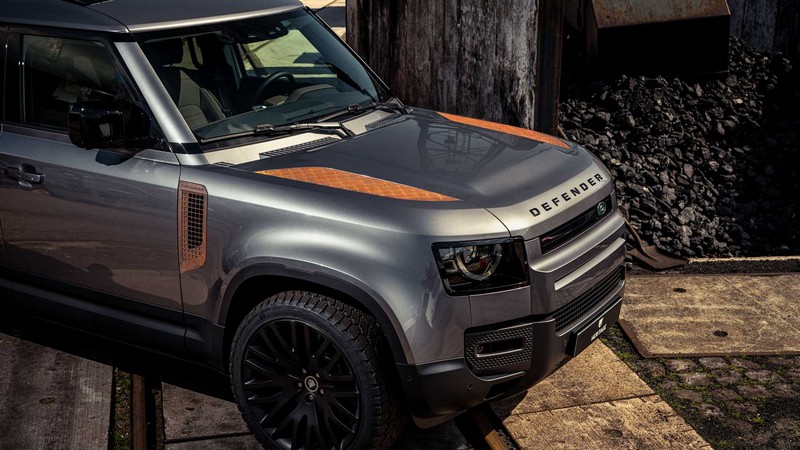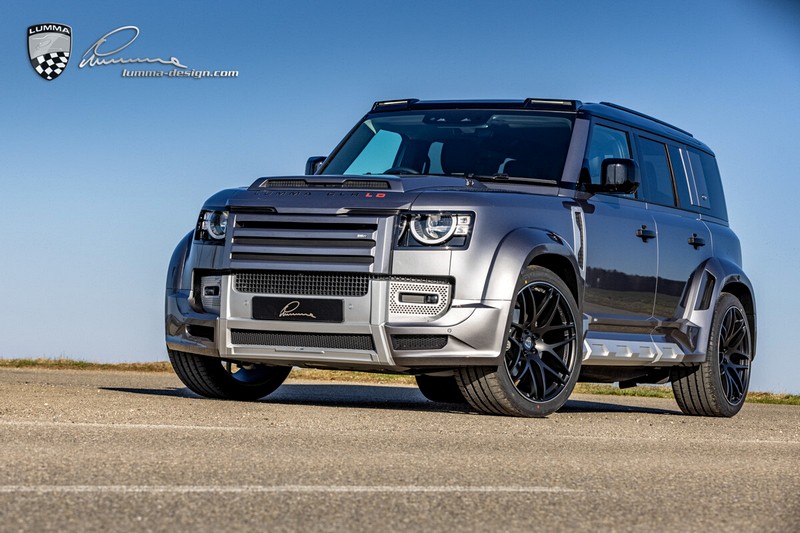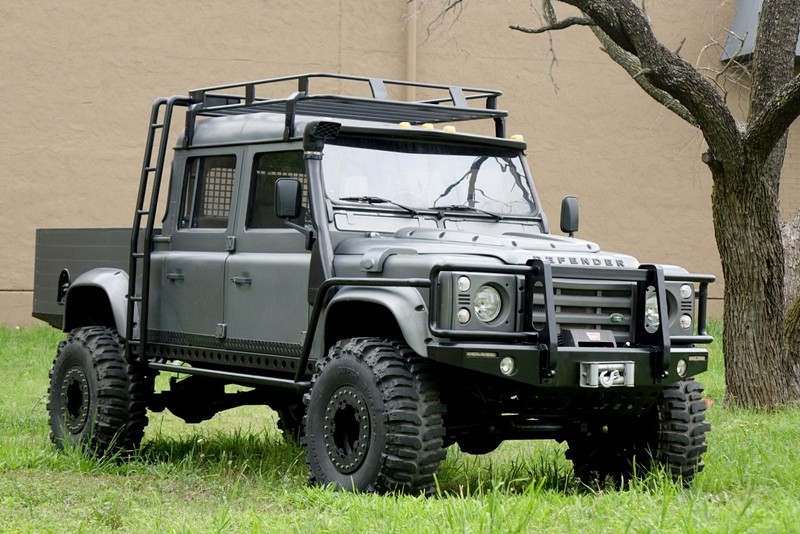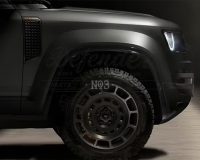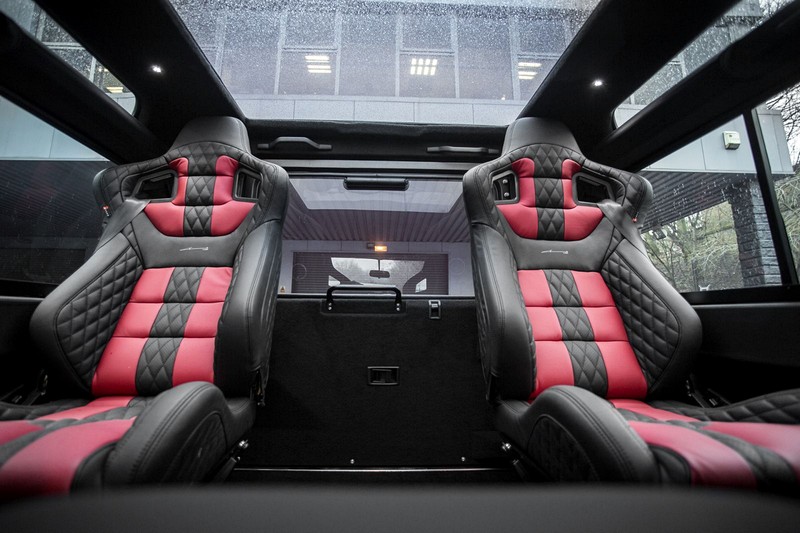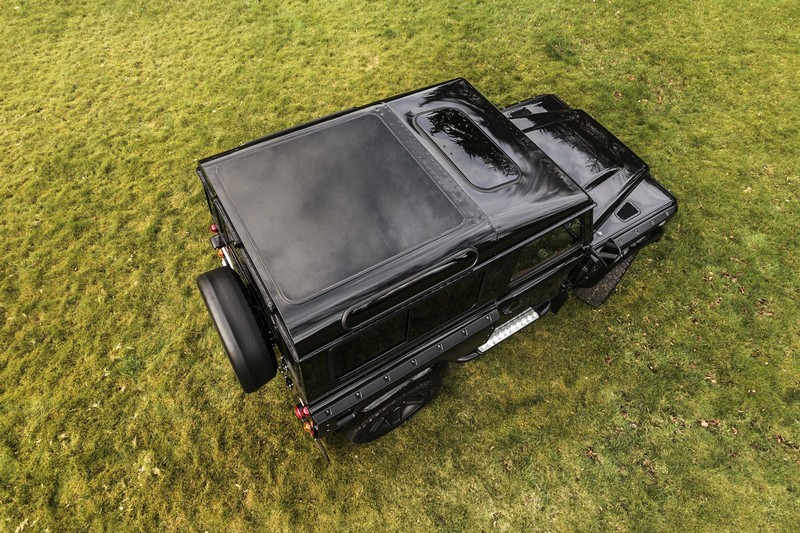The redesigned Land Rover Defender launched head-first into the most confounding automotive marketplace we’ve seen since the financial crisis of 2008. First delayed by the pandemic itself, and later by its ensuing logistical complications, the short-wheelbase 2021 Defender 90 has finally arrived. Well, sort of. It’s a year late and still virtually impossible to find, but it does officially exist.
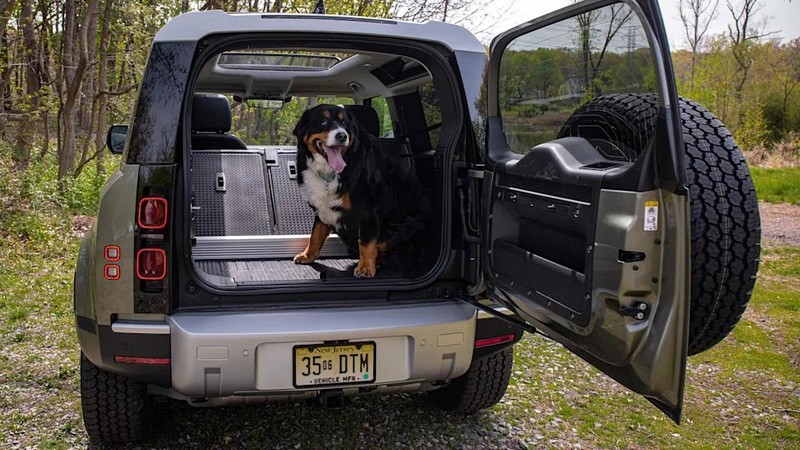
Setting aside all of that, though, it’s a great time to be in the market for a 4×4. The Jeep Wrangler is better than it has ever been and the Ford Bronco and Land Rover Defender have both (almost) made their triumphant returns to U.S. showrooms. The calendar says 2021, but if you’re into off-roading, you’re partying like it’s 1996.
Mostly, anyway. After all, a lot has changed about the way we build cars in the past quarter-century. The Defender is no longer a body-on-frame truck. It utilizes an aluminum-heavy unibody that Land Rover claims is three times stiffer than the last steel-frame model.
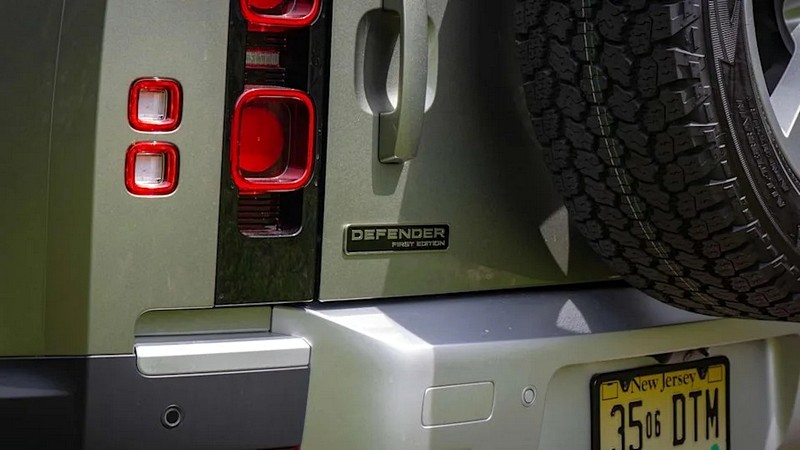
There are comfort and refinement advantages too, but make no mistake, from behind the wheel the Defender is every bit the off-roader its image projects. One of its durability tests involves driving into an 8” curb at 25 miles per hour. Land Rover’s PR folks asked us not to try this, as it’s a bit rough on the wheels and tires, but assured us that the chassis itself would withstand the punishment.
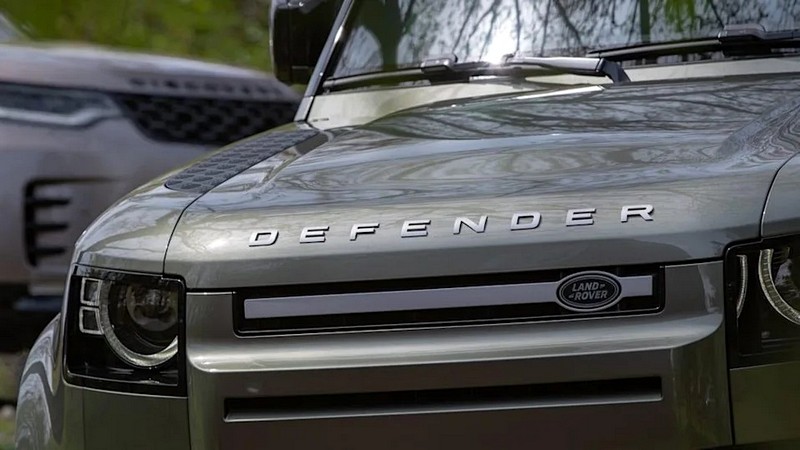
Yes, despite its double-wishbone independent front suspension and multilink rear (with optional air ride, as our tester had), the Defender is still a 4×4 first and foremost, a fact you’ll be reminded of the first time you encounter any sort of surface imperfection. This may sound strange, but Land Rover’s engineers seem to have gone out of their way to preserve the sensation of ruggedness one gets from a traditional, solid-axle truck. Put another way: it drives kind of like a Jeep.
Part of that is down to the 90’s short wheelbase. It’s a full 17 inches shorter than the 110’s, and consequently, like the two-door Wrangler and Bronco, it’s going to have a tougher time dealing with big, jarring bumps. A longer wheelbase allows the car to settle more between the time it takes for the front and rear axles to impact the same obstacle. With a shorter wheelbase, you’re more likely to have both axles trying to sort themselves out from the same impact simultaneously – but not exactly simultaneously. This contributes the choppiness that is often characteristic of short-wheelbase, hard-sprung vehicles.
This is the long way of saying that despite being significantly more sophisticated than either the Wrangler or Bronco (and your author has spent time in both, though admittedly very little in the still-new Ford), if you go in expecting it to glide across broken pavement like a Jaguar F-Pace, you’re going to be sorely disappointed. It’s not nearly as sprightly as the Jaguar with the same engine either, thanks to its extra heft and upright, ground-clearance-friendly posture. It feels like a 4×4, not a highway cruiser.
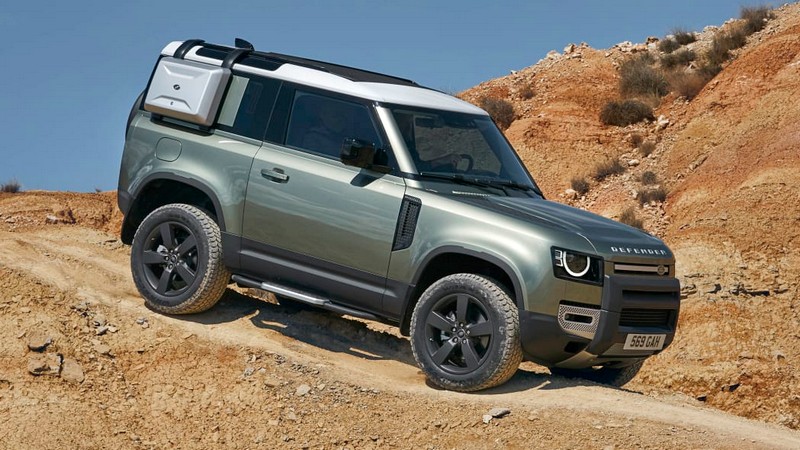
Where this pays dividends is off pavement. We’ve not had the opportunity to take the Defender 90 off the asphalt just yet (dirt roads in suburban Detroit notwithstanding), but that is where the sawed-off SUV will have the opportunity to shine. The shorter wheelbase improves both turning maneuverability and maximum breakover angles, giving it an advantage on tight trails and taller obstacles. We’re working with Land Rover to get our hands on the D90 with the explicit purpose of taking it off-road; stay tuned for that.
Our tester was a First Edition model with a $66,475 sticker price and only two included options: a tow hitch receiver and a set of off-road tires. The First Edition is based on the P400 X-Dynamic with a 394-horsepower inline-6 (four- and eight-cylinder models are also available). Apart from the unique aesthetic elements, the First Edition also adds electronic air suspension, adaptive dampers and configurable terrain response. That last feature is actually pretty cool, in that it allows you to fine-tune the Defender’s drive mode behavior with far more granularity than is typical.
We spent most of our time cruising around the northern Detroit ‘burbs, where the Defender 90 was most adept at turning heads. Even here in the land of the jaded automobile enthusiast, the D90 still has the smell of forbidden fruit. Cruising around with the fabric top insert rolled back to do a sardine-can-like impression of a soft-top Wrangler, the two-door actually looks a bit ungainly to your author’s eyes.
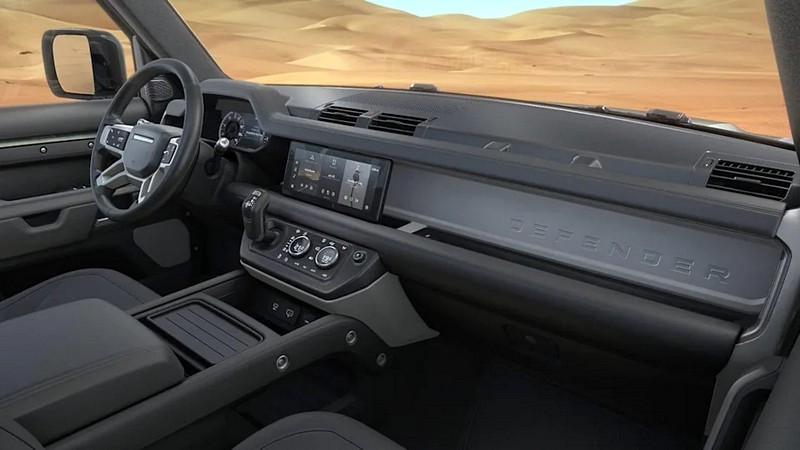
Inside, it’s more of the same. The materials are better than what you get in a Bronco or Wrangler, to be sure, but at least at the relatively sane price point of the mid-trim model we drove (no Walnut veneer trim or fancy leather steering wheel to be found here), you’re getting a fairly straightforward, no-frills experience. The Defender’s new Pivi Pro infotainment screen dominates the interior aesthetic; just a handful of controls grace the remaining spaces on the dash and console; the large knobs under the Pivi Pro screen are toggled to perform multiple functions.
There are some nods to both heritage and practicality in here as well. Our test model had the included jump seat (another First Edition inclusion), which theoretically gives you a six-passenger configuration. Neither we nor Land Rover explicitly recommends the Defender 90 for those who plan to carry more than one or two passengers at a time, but it’s cool to see nonetheless and it folds away sufficiently to do a reasonable impression of a center console when not in use.
By and large, the new Land Rover Defender lives up to its legacy. It’s decidedly more expensive than the Ford Bronco or Jeep Wrangler, but not so prohibitively costly that you’d hate to take one near a trail for fear of scratching it (looking at you, Mercedes-Benz G-Class). The 90 is the clear choice for the enthusiast who intends to hit the trails and its drawbacks are no more consequential than any other short-wheelbase off-roader’s, provided you’re comfortable getting dirty in a $65,000 British SUV. Hey, it’s still cheaper than a Wrangler 392, right?
Article Credit: Byron Hurd
Full Article: https://ph.news.yahoo.com/2021-land-rover-defender-90-123000327.html

